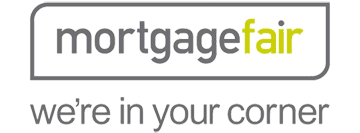Introduction to Loans
Mortgage managers, banks, credit unions, brokers, insurance groups all offer a seemingly endless choice of loan options – introductory rates, standard variable rates, fixed rates, redraw facilities, lines of credit loans and interest only loans, the list goes on. But with choice comes confusion.
TYPES OF LOANS
BASIC HOME LOAN
This loan is considered a no-frills loan and often offers a very low variable interest rate with little or no regular fees. Be aware they usually don’t offer additional extras or flexibility in paying off extra on the loan or varying your repayments.
These loans are directed towards people who don’t foresee a dramatic change in personal circumstances and who may not need to adapt the loan in accordance with any lifestyle changes, or people who are happy to pay a set amount each month for the duration of the loan.
INTRODUCTORY RATE OR ‘HONEYMOON’ LOAN
This loan is attractive as it offers lower interest rates than the standard fixed or variable rates for the initial (honeymoon) period of the loan (i.e. six to 12 months) before rolling over to the standard rates. The length of the honeymoon depends on the lender, as too does the rate you pay once the honeymoon is over. This loan usually allows flexibility by allowing you to pay extra off the loan. Be aware of any caps on additional repayments in the initial period, of any exit fees at any time of the loan (usually high if you change immediately after the honeymoon), and what your repayments will be after the loan rolls over to the standard interest rate.
REDRAW FACILITY
This loan allows you to put additional funds into the loan in order to bring down the principal amount and reduce interest charges, plus it provides the option to redraw the additional funds you put in at any time. Simply put, rather than earning (taxable) interest from your savings, putting your savings into the loan saves you money on your interest charges and helps you pay off your loan faster.
LINE OF CREDIT / EQUITY LINE
This is a pre-approved limit of money you can borrow either in its entirety or in bits at a time. The popularity of these loans is due to its flexibility and ability to reduce mortgages quickly. However, they usually require the borrower to offer their house as security for the loan. A line of credit can be set to a negotiated time (normally 1-5 years) or be classed as revolving (longer terms) and you only have to pay interest on the money you use (or ‘draw down’). Interest rates are variable and due to the level of flexibility are often higher than the standard variable rate.
100% OFFSET ACCOUNT
With this loan your money is paid into an account which is linked to the loan – this account is called an Offset Account. Income is deposited into the Offset Account and you use the Offset Account for all your EFTPOS, cheque, internet banking, credit transactions. Whatever is in the Offset Account then comes directly off the loan, or ‘offsets’ the loan amount for interest. Effectively you are not earning interest on your savings, but are benefiting as what would be interest on savings is calculated on a reduction on your loan.
SPLIT LOANS
This is a loan where the overall money borrowed is split into different segments where each segment has a different loan structure i.e. part fixed, part varied and part line of credit. These loans are directed at people who seek to minimize risk and hedge their bets against interest rate changes while maintaining a good degree of flexibility however subject to the proposed structure of the split loans taxation issues may arise in some circumstances.
What are the advantages and disadvantages of some loan facilities?
Some generic examples are:
Basic Home Loan
Typically suits someone making minimum repayments with a low bank account balance month to month.
Fixed Home Loan
Typically suits someone who is working to a tight budget, is sensitive to interest rate movements and is not planning on making large lump sum repayments
100% Offset Account:
Typically suits someone who has a high bank account balance month to month, is saving for other purposes, and considering future tax consequences
Line of Credit
Typically suits someone who is interested in making minimum monthly repayments (such as interest only) or looking for future flexibility and/or the ability to borrow additional funds without reapplying.











